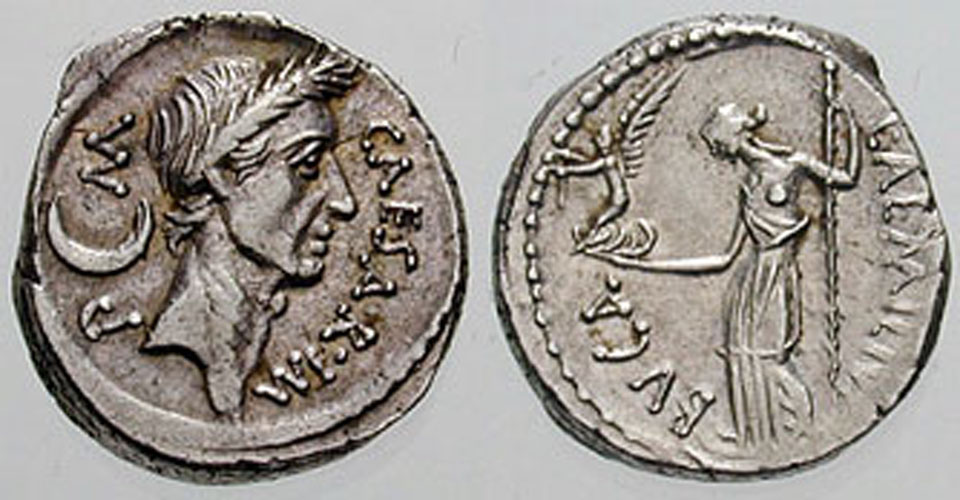2024年2月29日
Julius Caesar and Leap Days
Image Credit & License: Classical Numismatic Group, Inc., Wikimedia
Explanation: In 46 BC Julius Caesar reformed the calendar system. Based on advice by astronomer Sosigenes of Alexandria, the Julian calendar included one leap day every four years to account for the fact that an Earth year is slightly more than 365 days long. In modern terms, the time it takes for the planet to orbit the Sun once is 365.24219 mean solar days. So if calendar years contained exactly 365 days they would drift from the Earth’s year by about 1 day every 4 years and eventually July (named for Julius Caesar himself) would occur during the northern hemisphere winter. By adopting a leap year with an extra day every four years, the Julian calendar year would drift much less. In 1582 Pope Gregory XIII provided the further fine-tuning that leap days should not occur in years ending in 00, unless divisible by 400. This Gregorian Calendar system is the one in wide use today. Of course, tidal friction in the Earth-Moon system slows Earth’s rotation and gradually lengthens the day by about 1.4 milliseconds per century. That means that leap days like today will not be necessary, about 4 million years from now. This Roman silver coin, a denarius, depicts Julius Caesar (left) and Venus, Roman goddess of love.
Tomorrow’s picture: pixels in space
凯撒与闰年
影像提供与授权: Classical Numismatic Group, Inc., Wikimedia
说明: 凯撒大帝(Julius Caesar)在西元前46年修定了历法。当年在天文学家亚历山卓城的索西琴尼之建议下,颁行每四年安排一个闰日的新历法,以反应地球的一年比365天略长的事实。以现代的术语来说,地球绕太阳转一圈所需的时间是365.24219个平均太阳日。所以,历法的一年假如只有365天,那么每4年大约就会差一天。如果长久累积下来,北半球的冬天就会出现在以凯撒为名的七月 (July)。在每隔4年的闰年多加一天之后, 就能降低历法和太阳年之间的差异。1582年,天主教皇格里十三世更进一步修正太阳历,增加尾数是00的年份不闰,除非能被400整法的定则。格里历就是现在通行于世界各国的太阳历。地球-月亮系统内的潮汐摩擦力,是造成地球自转变慢,以及地球一天的长度,每世纪增加约1.4毫秒的原因。也就是说,大约再过4百万年,像今天这样进行加闰就没有必要了。这枚罗马第纳里乌斯银币,币面上有凯撤的头像(左)及罗马爱神维纳斯的肖像。
明日的图片: pixels in space








2 Comments